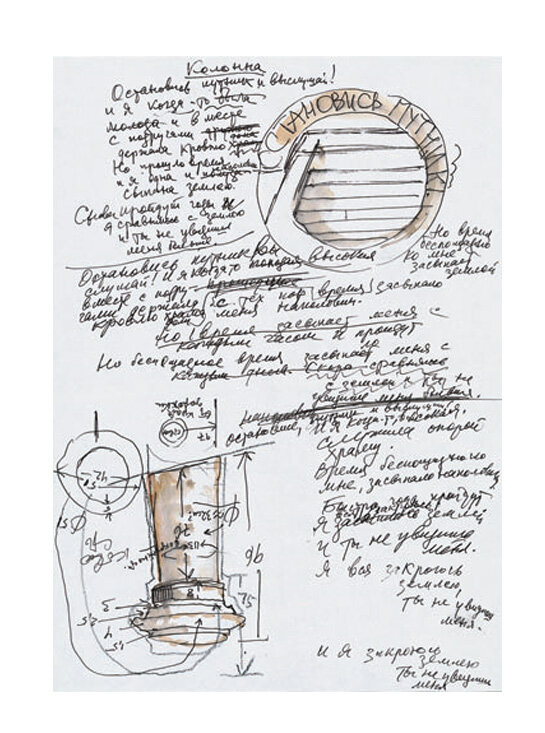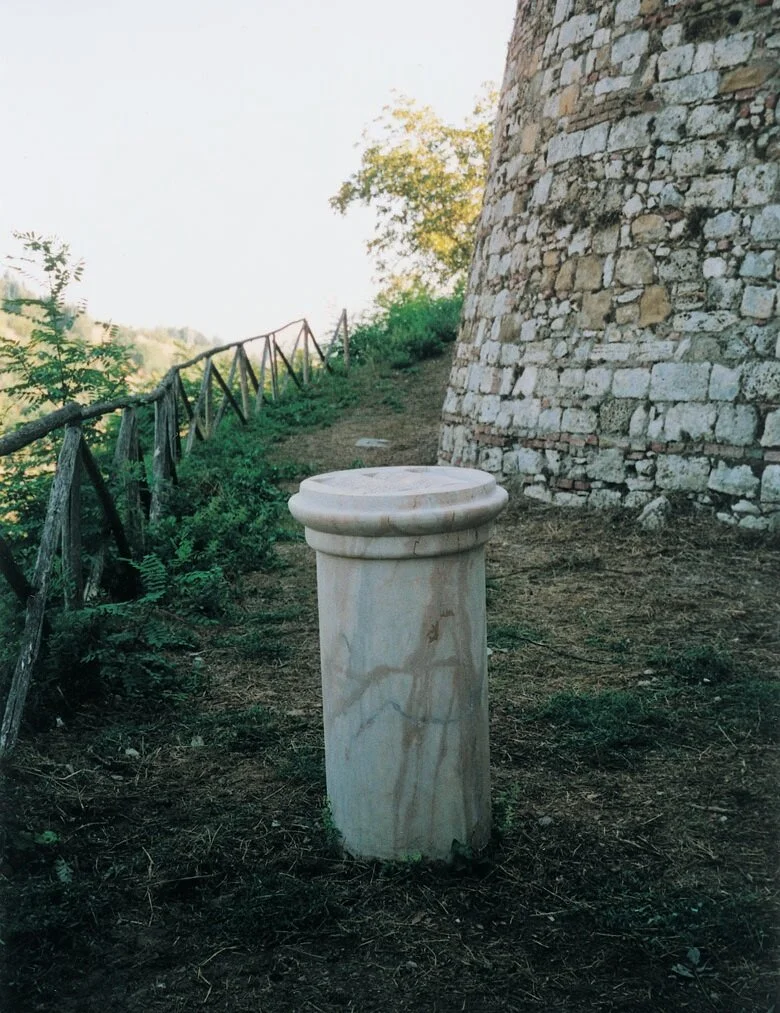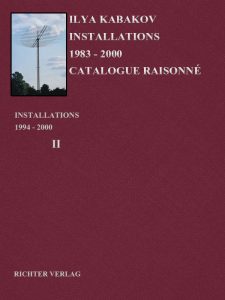The Weakening Voice (The Column)
with Emilia Kabakov
YEAR: 1998
CATALOG NUMBER: 135
PROVENANCE
The artist
1998, Collection of the Commune of Colle di Val d’Elsa
NOTES
See No 134, 136
EXHIBITIONS
Colle di Val d’Elsa, Tuscany, Italy
Arte all’Arte 98, 12 Sep 1998 — 17 Nov 1998 (Organisation: Associazione Arte Continua, San Gimignano)
DESCRIPTION
In the outskirts near the ancient Italian city wall (on its external side), there is a marble column, almost one-third of which is underground (its upper surface is visible). On this surface, an open book is carved in bas-relief with the following text in Italian:
“Long have I, side by side with my friends, held the portico in the sky.
The portico is no longer, nor do my friends exist, the earth is ever closer.
Soon I shall vanish altogether, and you shall no longer be able to hear my voice.”
The location of the column is very important and is connected with the content of the text and its appearance. Next to the column, there is a high wall and a staircase that leads from the ancient gates, but not as a road to the outside, but rather as a small path that then leads steeply downward into a small crevice. The city residents do not use this path very frequently, but it is a typical kind of tourist path that chains of tourists use to ascend into the city from the bus parking lots. It is precisely to the side of such a path, at a distance of 7-8 meters away, that this column, slanted as though with time, has been erected. Hence, in order to see and especially to read what is written on it, you have to step to the side.
The special quality of this ‘sculpture’ is that it belongs to two diverse epochs equally distant from us, and both have vanished into ‘history’ such that for today’s consciousness they have merged together into the ‘ancient past.’ But for the ‘specialist,’ these different epochs are sufficiently distinct. The column itself is a Roman rarity, it represents a traditional detail of ‘Roman ruins.’ The relief of the book and the text on it perhaps belong to the period of Romanticism and are carved on the upper surface of the column in the capacity of a late epitaph. All of this genuineness is, of course, fictitious, and it is intended to invoke nostalgia for the past. To create this nostalgia, in addition to the appearance of a column vanishing into the ground, its ‘voice’ is used – it is assumed that it will be audible.
In this sense, the place where the installation is erected is also very important: the edge of the city, a place ‘forgotten’ by both residents and tourists, where the distant vistas of the Tuscan landscape open up before us, and where a highway with speeding cars can be seen on the other side of the ravine – a necessary contrasting complement to the image of the ‘vanishing marvelous past.’
Moreover, the solitariness of the column is entirely relative. A narrow path made of stones leads from the tourist trail to the column, and there is a stone tower erected directly above it on the hill, the history of which is familiar from Dante’s ‘terza rima.’
Images
Literature






